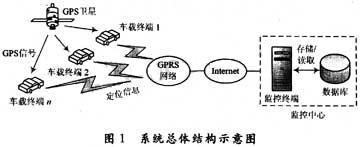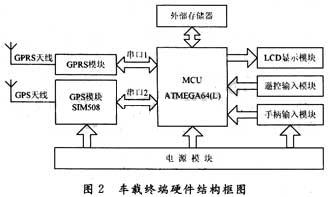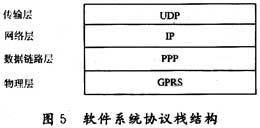introduction
This article refers to the address: http://
With the development of science and technology, the popularity of automobiles and the construction of roads, inter-city economic exchanges are more frequent, and the area of ​​activities is also growing, resulting in serious problems such as traffic congestion, increased car accidents, and increased emissions. The emergence of the Intelligent Transportation System (Intelligent Transport System) has effectively improved the above various traffic problems. The intelligent transportation system is an effective integration of advanced information technology, communication technology, sensing technology, control technology and computer technology into the entire transportation management system, and it is established in a wide range and in all aspects. , a comprehensive transportation and management system that is real-time, accurate and efficient. It improves transportation efficiency through the harmony of people, vehicles and roads, alleviates traffic congestion, improves road network passing capacity, reduces traffic accidents, reduces energy consumption, and reduces environmental pollution.
The vehicle monitoring system is a branch of the intelligent transportation system. It combines advanced wireless positioning technology, geographic information system and modern mobile communication technology. It not only plays a major role in the intelligent transportation system, but also provides anti-theft and anti-robbery alarms and emergency. Medical help, entertainment and other services. This paper selects the vehicle terminal module in the whole system for design and implementation, and introduces the GPS vehicle terminal.
First, about GPS vehicle terminal
GPS vehicle terminal is also called GPS vehicle management system or GPS vehicle monitoring system. It is a software and hardware integrated system that provides vehicle management information based on satellite positioning, geographic information and wireless communication.
1. Overall structure of vehicle monitoring system
The vehicle monitoring system consists of four parts: GPS satellite, vehicle terminal, communication network (GPRS and Internet) and monitoring center. During the running of the vehicle, the GPS receiver of the vehicle terminal receives the positioning data, calculates the current longitude, latitude, speed, heading and other information (time, status) of the vehicle, and then transmits it to the monitoring with static IP address through the GPRS network. Center, and the depositor center database. After receiving the information uploaded by the vehicle, the monitoring center scientifically schedules and manages according to the current situation of the vehicle, thereby improving operational efficiency. Customers can also check the current status of a particular vehicle via the Internet or by phone.
The overall structure of the system is shown in Figure 1.

Figure 1 Overall structure of the system
2. Features of the vehicle terminal
1. The appearance is small and the performance is stable. The mainframe, such as the size of the cigarette case, can be installed in a very concealed place, and the GPS antenna does not need to be placed outside, because it uses the fourth-generation module of super-strength reception, so it can be placed in a relatively hidden place in the car. The internal components of the mainframe are all imported industrial grade materials. The core GSM module is the Siemens brand of Germany, the GPS module is HOLUX SIRF III, the core MCU is the most stable P IC, and the other IC components are the German TI company.
2, the installation is simple. Only need to connect the two power cords of the original car. The oil-disconnecting device can be connected or not. If you need to install the oil-cutting device, you only need to cut the power supply line of the original car oil pump and connect it to the machine.
3. The false alarm rate is low. This product pays attention to humanized design and minimizes the false alarm rate.
4, multiple prevention, to ensure that there are police must report.
3. Function of the vehicle terminal
The satellite receiving module of the vehicle GPS/GPRS terminal collects GPS satellite data, and obtains the geographical coordinate information of the vehicle through data processing. After the information is processed by the vehicle terminal, it is sent by the GPRS wireless communication module to the GPRS wireless communication network. The GPRS network establishes a data channel supporting TCP/lP between the in-vehicle terminal and the monitoring center of the accessing Internet network according to the corresponding protocol. The car GPS/GPRS terminal relies on the information exchange between the data channel and the monitoring center. The monitoring center can also send control commands and service information down through this channel.
In addition, in addition to vehicle positioning, the system can also provide various services such as anti-theft and anti-grab, power off and power off mobile vehicles, display scheduling information, medical help, mobile phones and the like.
Second, the vehicle terminal hardware design
The vehicle terminal hardware system is based on ATMEGA64(L) MCU and GPS+GPRS module, and its structure is shown in Figure 2.

1. Information Processing and Control Module
This paper adopts the AVR series of single-chip microcomputer system, which mainly performs information processing and controls the operation of each component of the vehicle-mounted station in accordance with the requirements of the communication protocol. The module consists of a CPU, external memory, I/O interface, and control logic. The CPU is implemented by ATMEGA64(L) microcontroller, which has two serial ports for communication with GPS and GPRS modules. It is a low-power 8-bit CMOS microcontroller based on an enhanced AVRRISO structure, with its advanced instruction set and single clock cycle instruction execution time. ATMEGA64(L) has a data throughput rate of up to 1MIPS/MHz, which can slow down the system. The contradiction between power consumption and processing speed.
2.GSM/GPRS+GPS module
The GSM/GPRS+GPS module uses SIMCOM's SIM508 module. The SIM508 module is a product that fully integrates tri-band GSM/GPRS and 20-channel capable GPS into one module (34mm x 55mm x 3mm). The product is designed to meet the requirements of automotive applications (temperature, humidity, shock, etc.). In particular, the SIM508 with integrated components can save a lot of time and cost. The vehicle terminal obtains the specific location of the vehicle through the GPS part of the module, and after being processed by the CPU, displays it to the user and transmits the information to the monitoring center through the GPRS part, so as to realize real-time positioning and tracking of the vehicle, and at the same time, realize voice and short Message communication function.
3. Input and output modules
The input of the vehicle terminal mainly includes two methods: a remote control input (main input device) and a handle input. Taking into account the limitations of the handle input in an emergency, this article uses the remote control as the main input device, which can be used to complete functions such as voice dialing, sending and receiving short messages, medical help, maintenance and assistance, and opening and closing devices.
The output is realized by the 12232F liquid crystal module, which can display graphics or 7.5×2 (16×16 dot matrix) Chinese characters. The interface with the external CPU can be parallel or serial. Considering the simplicity of programming, the vehicle terminal uses the string. Line interface connection.
Third, the vehicle terminal software design
The software system adopts a modular design method. Each module implements a function or a protocol. Each functional module appears as a sub-function, which shortens the software development time, is easy to modify and transplant, and at the same time, when writing software, it still has Some software application interfaces facilitate software upgrades, such as adding new protocols.
The software system function module is shown in Figure 3.

1. Software system workflow
The main function of the vehicle terminal software system is completed by the main program. The main program uses the system structure of the state machine, and its workflow is shown in Figure 4.

When the program works, the GPS and GPRS serial port initialization work is first performed, and then the main control loop is entered. In the main control loop, it is first recognized whether the GPS data is valid, that is, whether the positioning is successful, and if the positioning is successful, the system goes to the next state to establish a GPRS connection, otherwise the positioning is re-positioned. After establishing a GPRS connection, you can send it to the monitoring center.
Send the processed positioning data. At the same time, during the running of the main program, the remote controller can also input an interrupt request in response to other functions.
2. Software system protocol stack
Drawing on the OSI model and the standard TCP/IP protocol stack, the system uses a four-layer network transport protocol: transport layer, network layer, data link layer and physical layer. The structure of the system protocol stack is shown in Figure 5.

Considering the tens, hundreds, or even thousands of vehicle-mounted terminals in the vehicle monitoring system, for applications with small data volume, multi-point dispersion, high real-time requirements, and a large number of terminals, the transmission layer uses UDP more than TCP. a little better. As a network layer protocol, the IP protocol mainly cuts the data stream into appropriate sizes, and then routes the data packets to the destination IP by using different routes. On top of the physical layer, the PPP protocol acts as the only designated data link layer protocol for GPRS over the physical layer, transforming the original physical layer connection into an error-free data link by means of CRC check and acknowledgment. After the PPP negotiation succeeds, the system will successfully log in to the Internet remotely and obtain the IP assigned by the gateway to itself. The physical layer channel between the terminal and the network is the GPRS connection. The specific GPRS protocol has been done in the GPRS modem. After the data terminal sets the correct AT command of the GPRS modem, the dialing command can be used to dial the dialing. After receiving the dialing feedback response of the GPRS modem, a physical channel is the GPRS channel. It is established between the terminal and the network.
3. The future development trend of urban intelligent transportation
With the development of urban traffic problems, urban transportation integrated information platform, global positioning and car navigation systems, urban public transportation vehicles and taxi vehicle command and dispatch systems, urban comprehensive emergency systems will usher in greater development opportunities.
In general, the development trend of urban intelligent transportation system will be manifested as an integrated, multi-sector-driven development model. As the urban intelligent transportation system will involve relevant citizens, public security traffic management, traffic department vehicle management, urban construction, communications and other related departments, the future development of urban intelligent transportation will inevitably be a multi-sector involving transportation and public security. The development process of the drive.
Fourth, summary
This paper introduces the implementation scheme of GPS/GPRS-based vehicle monitoring system terminal, and gives detailed software and hardware composition and design implementation. After many times, the system is stable and the effect is good. The system can be applied in the fields of hand command and monitoring system, city leased car management system, logistics and transportation system, medical rescue system, etc., and the market prospect is extremely broad.
Home and indoor or building air filters remove unwanted particles like dust, pollen, pet dander and mold and ensure even the most allergy prone can breathe easily year–round. However, choosing the right filter for your home can be a rather involved process. To help, here are the most common indoor air filters and what each of them provides. The filters are the simplest basic component for air filtration solution through your heating and cooling system ,It is important that you constantly monitor the buildup of debris on these filters as well because it can easily be recycled into the air supply. It is easy change and maintain.
Indoor Air Purification Filter & Air purifier filter
Air Filter, Indoor Air Purification Filter,Building Air Purification Filter,Panel Air Filter
Donguan Bronco Filter Co., Ltd , https://www.broncofilter-cn.com